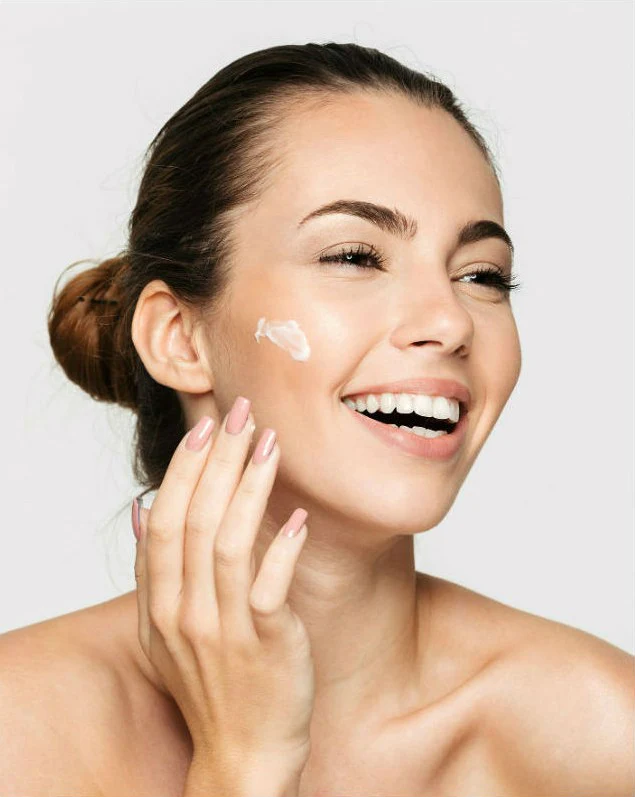
Moisturizer or Sunscreen First
The Great Debate: Moisturizer or Sunscreen First?
One of the most hotly debated topics in skincare involves the proper order of product application. Should you apply moisturizer or sunscreen first in your morning routine? Both products play vital roles in maintaining a healthy, protected complexion. Skipping either step could potentially undermine the other’s effectiveness. So what is the best approach to layering these essentials?
The Case for Applying Moisturizer First
Many dermatologists recommend applying moisturizer before sunscreen in the morning. This “moisturizer first” approach stems from how sunscreen interacts with the skin’s surface. Sunscreen forms a UV-shielding layer on top of the outermost cells. It requires direct access to create this protective film properly.
Applying sunscreen first creates a barrier that can impair moisturizer penetration and absorption. The hydrating, nourishing ingredients end up sitting on top of the sunscreen layer rather than fully reaching the skin. This traps moisturizing benefits away from where they need to work beneath the surface.
The Drawbacks of This Method
However, layering moisturizer underneath sunscreen presents some drawbacks too. The emollients and oils in many moisturizers create a slick surface that can interfere with the sunscreen’s adherence. The sunscreen may fail to spread evenly over the “primed” moisturized surface. This negatively impacts the uniform UV protection it provides.
There’s also the risk of excessive layering or pilling. Applying too much moisturizer can cause the sunscreen to ball up or flake off in concentrated areas after drying down. This leads to inconsistent protection and wasted product.
Why Sunscreen Should Go On First
Plenty of skincare experts stand firmly in the “sunscreen first” camp as well. Their reasoning is rooted in providing the maximum UV shielding and anti-aging benefits possible. Since the role of sunscreen involves filtering and blocking harmful rays, applying it first makes sense. This creates the most resilient, unblemished barrier effect against environmental damage.
Sunscreen directly interacts better with the bare skin surface. It binds optimally to create an even, continuous protective layer that stays locked in place. Whereas moisturizer can potentially distort and disrupt the sunscreen film when layered after.
Another pro for sunscreen first involves timing and product order logic. Since UV ray exposure begins upon going outside, prioritizing sun protection makes practical sense. This ensures skin gets shielded from those first damaging rays before applying any topical treatment products underneath.
The Counterarguments Against It
On the flip side, this method does introduce some potential drawbacks. Layering moisturizer over sunscreen makes it even more challenging for those hydrating ingredients to fully absorb into skin. Sunscreen acts as an inherent barrier that helps block beneficial ingredients from penetrating as well.
Additionally, the act of physically spreading and massaging in moisturizer over sunscreen can disturb or dislodge that carefully formed protective UV filter layer. This undermines the sunscreen’s effectiveness somewhat.
The Best Solution: Use Separate Products
Based on the pros and cons of each method, many experts suggest using completely separate moisturizer and sunscreen products. In the morning, apply a moisturizer formulated solely for hydration benefits first. This allows its ingredients to fully absorb unobstructed into bare skin.
After letting the moisturizer set for 3-5 minutes, follow up by applying a dedicated sunscreen product on top of the moisturized surface. Look for a sunscreen containing only active UV filtering ingredients and avoid formulas with added skincare benefits. This maintains a pure, resilient sunscreen layer on the outermost skin.
Another hybrid option involves using an SPF-containing moisturizer first. Then seal it in by layering a higher SPF sunscreen on top. This approach offers hydration with built-in sun protection further fortified by an additional SPF product.
Whichever method you choose, the key involves applying products from “thinnest to thickest” texture. So if using a lightweight moisturizer, apply that first. Then follow with the typically richer, creamier sunscreen formula second. This sequencing makes layering smooth and effortless every time.
Additionally, allowing 3-5 minutes for absorption between hydrating layers and SPF application is essential. This brief window ensures the moisturizer sets fully before applying sunscreen on top. It promotes better product interaction and maximum effectiveness for both.

For Optimal Protection, Layer Everything
At the end of the day, consistent use of broad spectrum SPF remains the most crucial factor for safeguarding skin. Using separate sunscreen over moisturizer simply provides the most dependable anti-aging UV shielding possible.
But hydration matters too. Achieving healthy, glowing skin demands diligent moisturizing to continuously replenish and nourish the surface. Using moisturizer creates the ideal base for sunscreen’s protective effects to shine over.
Regardless of which product goes on first in your routine, it’s absolutely essential to apply both daily. By properly utilizing moisturizers and sunscreens together, you’ll ensure full-spectrum anti-aging, hydration, and sun defense for a radiant, resilient complexion now and for decades to come.

Conclusion
The order in which you apply moisturizer and sunscreen can impact the effectiveness of both products. It’s important to remember that sunscreen should always be the final step in your skincare routine. By applying sunscreen as the last layer, you ensure that it forms a protective barrier on your skin, shielding it from harmful UV rays. When sunscreen is applied over moisturizer, it can provide better adherence to the skin, allowing it to function optimally. This is crucial for protecting your skin from potential damage caused by sun exposure.
On the other hand, applying moisturizer before sunscreen helps to hydrate and nourish the skin, creating a smooth and even surface for the sunscreen to be applied. Additionally, it prevents the sunscreen from diluting the moisturizer, ensuring that your skin receives the full benefits of both products.
Ultimately, the correct order for applying moisturizer and sunscreen is moisturizer first, followed by sunscreen. This sequence enables the moisturizer to lock in moisture and provide nourishment to your skin, while the sunscreen can effectively protect your skin from the sun’s harmful rays. By adhering to this order, you can ensure that your skin receives the maximum benefits from both products, promoting healthy and radiant skin.



